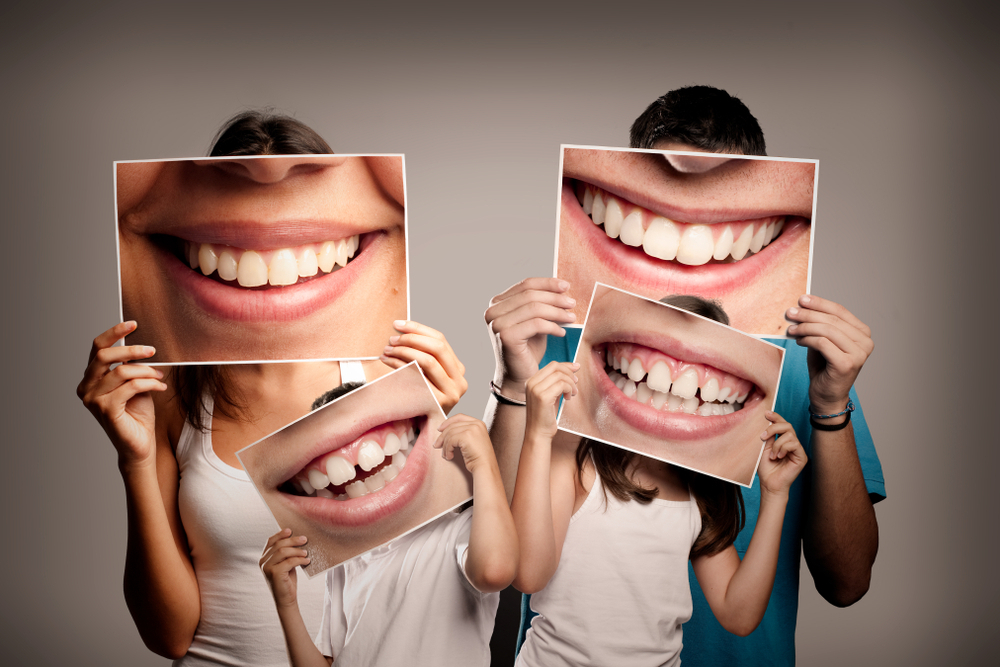The Ultimate Guide To Legacy Orthodontics
The Ultimate Guide To Legacy Orthodontics
Blog Article
Unknown Facts About Legacy Orthodontics
Table of ContentsThe Basic Principles Of Legacy Orthodontics Examine This Report about Legacy OrthodonticsSome Known Details About Legacy Orthodontics Legacy Orthodontics for BeginnersOur Legacy Orthodontics PDFs
In enhancement, we supply adjustable therapy routines, flexible settlement alternatives and an enjoyable, enjoyable experience.An orthodontist is a dental expert educated to diagnose, prevent, and deal with teeth and jaw irregularities. Orthodontists work with individuals of all ages, from kids to grownups.
Malocclusion, or misaligned teeth, can cause oral issues, consisting of dental caries, gum illness, and difficult or painful eating. Not everyone is birthed with straight teeth. If you have a negative bite or large spaces in between your teeth, you might want to seek advice from a dental expert focusing on orthodontic care.
The Basic Principles Of Legacy Orthodontics
( Picture Credit Report: DigitalVision/Getty Images) Orthodontists utilize fixed and detachable oral tools, like dental braces, retainers, and bands, to alter the position of teeth in your mouth. Orthodontic treatment is for dental abnormalities, consisting of: Misaligned teethBite issues, like an overbite or an underbiteCrowded teeth or teeth that are as well much apartJaw misalignmentThe objective of orthodontic therapy is to boost your bite.
While you could believe of orthodontists as mainly for youngsters or teens who need dental braces, they can remedy dental problems at any kind of age. Orthodontists attend college, oral college, and orthodontic college.
All orthodontists are dental experts, yet not all dental professionals are orthodontists. Orthodontic residency programs use extensive, focused direction for dental professionals. They concentrate on two areas: Just how to properly and safely relocate teeth Just how to correctly guide development in the teeth, jaw, and faceOnce an orthodontist has finished training, they have the option to become board certified.
Legacy Orthodontics - Truths
Misalignment, or malocclusion, is one of the most typical reason individuals see an orthodontist. It is genetic and is the result of dimension distinctions between the top and lower jaw or between the jaw and teeth. Malocclusion brings about tooth overcrowding, a misshapen jaw, or irregular bite patterns. Malocclusion is usually treated with: Your orthodontist attaches metal, ceramic, or plastic square bonds to your teeth.
If you have only minor malocclusion, you might be able to use clear braces, called aligners, as opposed to conventional dental braces (https://www.twitch.tv/legacyortho/about). Some people require a headgear to aid relocate teeth into line with pressure from outside the mouth. After dental braces or aligners, you'll need to wear a retainer. A retainer is a custom-made gadget that keeps your teeth in area.
They can produce extra room in the mouth without having to pull teeth. Orthodontists use wires, surgical screws, or plates to sustain your jaw bone.
You may need to see an orthodontist if you have: Crowding or not adequate area for every one of your teethOverbite, when your upper teeth come over your base teethUnderbite, when your base teeth are too far forwardSpacing or problems with gapsCrossbite, which is when your upper teeth fit behind your base teeth when your mouth is closedOpen bite or an upright space in between your front base and top teethMisplaced midline, when the facility of your bottom and upper teeth don't line up Dealing with a dental malocclusion can: Make biting, chewing, and speaking easierImprove the symmetry of our face and your general appearanceEase discomfort from temporomandibular joint problemsSeparate your teeth and make them simpler to clean up, helping avoid tooth degeneration or dental caries It's often a dental expert who initially notifications misaligned teeth during a regular exam.
Little Known Questions About Legacy Orthodontics.

Throughout your very first orthodontic consultation, you'll likely have: An oral examPhotos taken of your face and smileDental X-raysPanoramic (360 degree) X-rays of your face and headImpressions to create mold and mildews of your teethThese examinations will assist your orthodontist understand how to continue with your treatment. leesburg braces. An orthodontist is a dentist who's had training to treat your get more teeth and jaw
Orthodontists might execute surgical procedure, exams,X-rays,and even more to help you obtain a more comfy, much healthier smile. An orthodontist is concentrated on your bite, so something like a chipped tooth would certainly be handled by a dental expert. Orthodontists are dentists yet not all dental professionals are orthodontists. Orthodontists are concentrated on your bite, or the way your teeth fit with each other, and the straightness of your teeth.
Ever before asked yourself just how celebs constantly appear to have flawlessly lined up teeth? Orthodontists are dental experts that concentrate on correcting abnormalities in the teeth and jaws.
Legacy Orthodontics for Beginners

While dental braces are the most frequently recognized orthodontic treatment, orthodontists have a diverse toolkit at their disposal. The particular technique picked depends on the intensity of the instance, the client's age, and individual choices. These tried-and-true dental braces utilize a system of braces bound to the teeth and linked by cables.
Clear aligners, like Invisalign, are a popular option for people looking for an extra very discreet treatment option. These detachable trays are customized to progressively shift the teeth's placement. Headgear may be utilized in combination with braces or aligners to use additional targeted pressures, particularly for dealing with jaw disparities. In instances of narrow jaws, palatal expanders can be used to develop space for proper tooth positioning.
Report this page